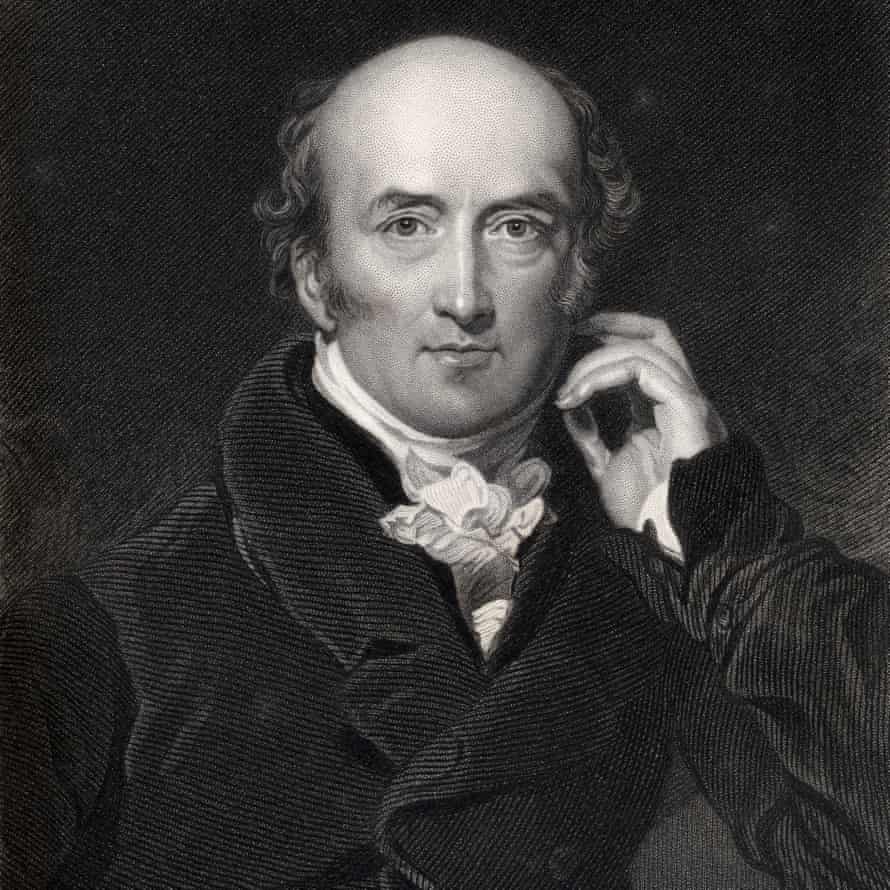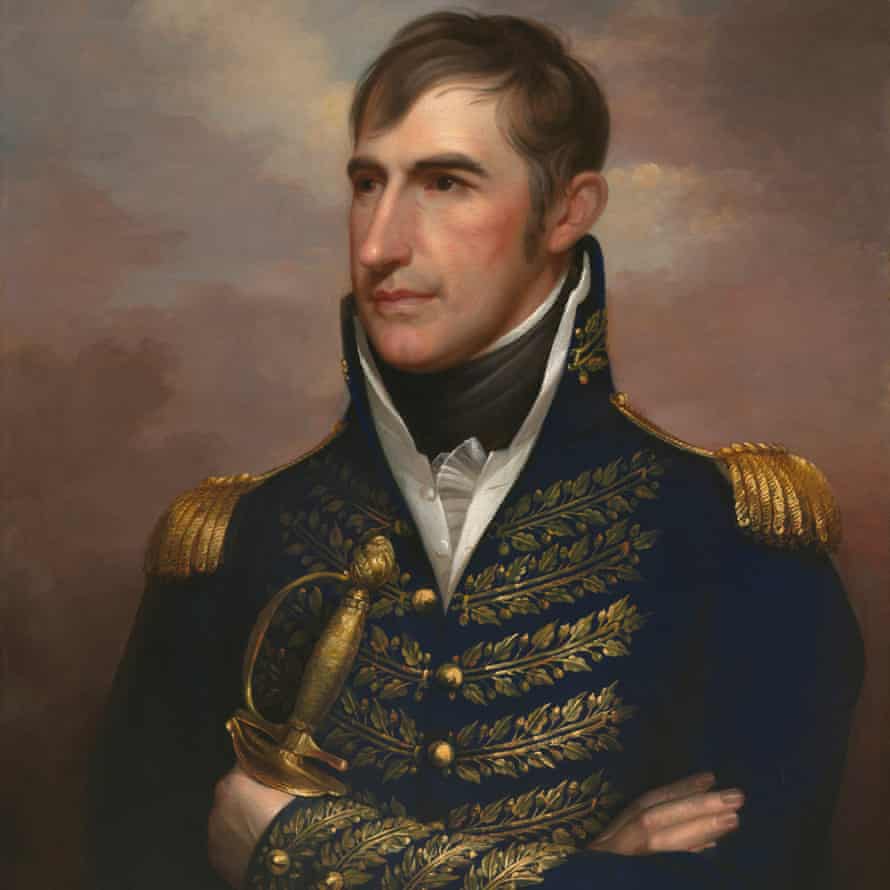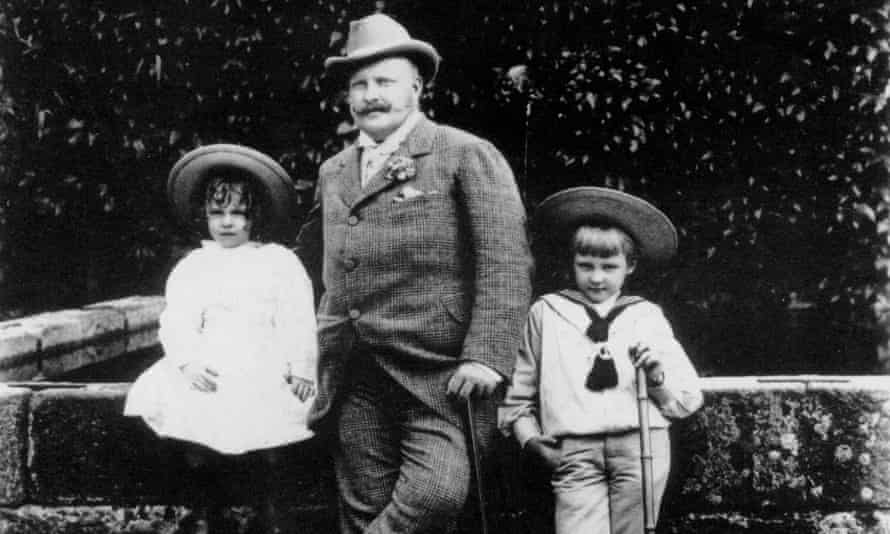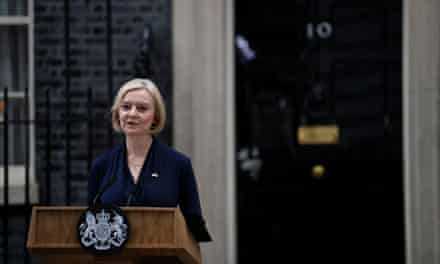Coup, assassination, abdication, suicide and illness – all have contributed to history’s shortest serving leaderships though none, in the literal sense at least, can be said to apply to Liz Truss.
But at just 45 days, she faces the ignominy of being the UK’s shortest-serving prime minister by some degree.
As she becomes an indelible footnote in British history, it will be little comfort to Truss that, compared to some, she has enjoyed positive political longevity.
British prime ministers

George Canning. Photograph: Universal Images Group/Getty Images
The Tory statesman George Canning had, until Thursday, the distinction of holding the UK record, serving 119 days in office before dying of tuberculosis on 8 August 1827. The holder of many senior government posts in his time, including foreign secretary, he is remembered for his part in such an extreme example of cabinet in-fighting that Truss’s woes pale in comparison. As foreign secretary, such was the antipathy between him and the war secretary Lord Castlereagh, that the government became paralysed by their disputes. It ended in a duel on Putney Heath when Canning, who had never fired a pistol, was wounded in the thigh. Though both resigned amid outrage that two cabinet ministers had conducted themselves in such a manner, Canning subsequently became prime minister. He died after barely five months in office.
Sir Alec Douglas-Home just missed his one-year anniversary in office, lasting 363 days before being replaced by Harold Wilson.
Chancellors
Joseph Goebbels can technically claim this record. He was, in effect, the German chancellor for just one night after Adolf Hitler killed himself on 30 April 1945. But the day after he replaced Hitler, Goebbels and his wife, Magda, poisoned their six children, then killed themselves.
Presidents

William Henry Harrison, circa 1813. Artist: Rembrandt Peale. Photograph: Heritage Images/Getty Images
William Henry Harrison was the ninth president of the United States, inaugurated in 1841 to become, at 68, the oldest to have held office at that point. Less than an hour into his 32nd day, he also became the first to die in office, serving the shortest tenure in US presidential history. He took the oath on 4 March, a cold, wet day during which he rode on horseback and delivered possibly the longest inaugural address in American history, taking about two hours. Some reports claim his refusal to wear a coat or hat that day contributed to the pneumonia that killed him on 4 April, though other reports attribute his death to typhoid fever.
Historians estimate Pedro Lascuráin enjoyed one of the shortest presidencies of all time, with the former mayor of Mexico City being installed as the country’s leader after a military coup in February 1913. His installation was simply a mechanism to legitimise the coup, led by Gen Victoriano Huerta, and serve as a transition to Huerta taking office himself. Lascuráin’s time as president is estimated to have lasted a mere 45 minutes.
Emperors
“Michael II” lasted less than a day as emperor of Russia after the abdication of his brother Tsar Nicholas II on 15 March 1917. His position was disputed and he made his accession conditional on the decision of the new provisional government in Russia. Around 18 hours after the abdication, Michael signed a manifesto acknowledging the provisional government, thus marking the end of the tsarist regime in Russia. He was never confirmed as emperor, and, after the Russian Revolution of 1917, was imprisoned and murdered.
Monarchs

Lady Jane Grey. Artist: W Holl. Photograph: Print Collector/Getty Images
Tragic Lady Jane Grey – “the nine days queen” – is remembered in British history as the monarch with the shortest reign. Proclaimed queen of England, Wales and Ireland on 10 July 1553 at the age of 16 after the death of her cousin, the protestant Edward VI, she was actually fifth in line but was chosen because she was a protestant. However, the country rose in favour of the first-in-line, Mary, who was Edward’s half-sister and the daughter of Henry VIII with Catherine of Aragon, and a Catholic. The privy council changed sides in favour of Mary, deposing Jane, who would be executed the following year.
Louis XIX of France lasted approximately 20 minutes on the throne in 1830. Heir apparent to Charles X, the dauphin spent his early life outside France but returned to fight for the royalists against Napoleon during the 1810s. He became king after the abdication of his father during the July Revolution in 1830. However, he was never proclaimed as such, reportedly stepping down about 20 minutes after Charles X. Though details are disputed, the Guinness Book of Records recognises his “reign” as the joint shortest, though it was on a technicality. He was, apparently king only between the time of his father’s abdication signature and that of his own, both of which were on the same document.
He shares this dubious distinction with the ill-fated Luís II of Portugal, who technically became king on 1 February 1908, after his father, Carlos I, was murdered in the Lisbon regicide. Son and heir Luís Filipe was fatally wounded at the same time but reportedly survived his father by roughly 20 minutes.

King Carlos I with his children, Luís Filipe (R) and Manuel in 1892. Photograph: Apic/Getty Images
History records many “reigns” of less than a day, especially in the first millennium and early centuries of the second. Among them, the unfortunate Vira Bahu I, king of Polonnaruwa (in present day Sri Lanka), who was assassinated in 1196 on the same day he succeeded his father. Crowned at night, he was slain at dawn by the commander in chief of the army.

















![EC Announces Elimination of Indelible Ink in Upcoming Elections [Video]](https://newsonghana.com/wp-content/uploads/2023/12/image-351-218x150.png)


































![[Video] Daylight Armed Robbery Captured Near Police Headquarters](https://newsonghana.com/wp-content/uploads/2021/02/gun-with-blood-80x60.png)






![Didier Drogba Honored With Doctorate Degree [Photos]](https://newsonghana.com/wp-content/uploads/2021/06/FB_IMG_1622730571201-100x70.jpg)

